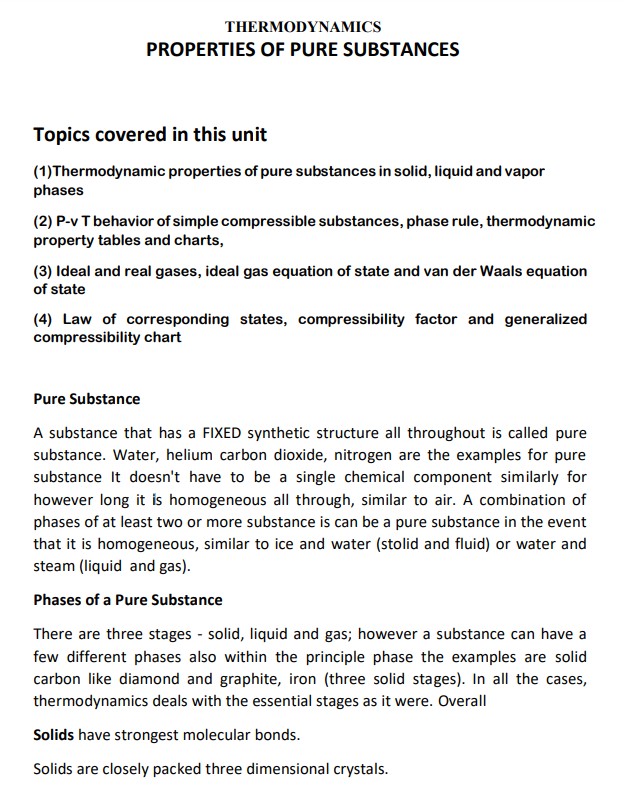Thermodynamics Properties of Pure Substances
Summary:
This course unit on thermodynamics explores the properties of pure substances, with an emphasis on phase changes and thermodynamic equations. Pure substances have consistent structures, and their different phases (solid, liquid, gas) exhibit varied molecular bond strengths and behaviours. Key concepts include the phase-change processes, such as from liquid to gas, which are essential in power generation.
Concepts like the triple point, where a substance can exist as solid, liquid, and vapour simultaneously, are discussed. Thermodynamic properties, such as internal energy, enthalpy, and entropy, are critical for understanding these processes and are often tabulated for ease of use. The Van der Waals equation extends the ideal gas law to account for intermolecular interactions and the finite size of molecules.
The law of corresponding states summarizes that conditions for most real gases, when expressed in terms of reduced temperatures, pressures, and volumes, are remarkably similar, indicating a standard behaviour across all fluids at the same reduced temperature and pressure.
Excerpt:
Thermodynamics Properties of Pure Substances
Topics covered in this unit
(1)Thermodynamic properties of pure substances in solid, liquid and vapor phases
(2) P-v T behaviour of simple compressible substances, phase rule, thermodynamic property tables and charts,
(3) Ideal and real gases, ideal gas equation of state and van der Waals equation of state
(4) Law of corresponding states, compressibility factor and generalized compressibility chart
Pure Substance
A substance that has a FIXED synthetic structure all throughout is called a pure substance. Water, helium, carbon dioxide, and nitrogen are examples of pure substances. It doesn’t have to be a single chemical component similarly, for however long, it is homogeneous all through, similar to air. A combination of phases of at least two or more substance is can be a pure substance in the event that it is homogeneous, similar to ice and water (stolid and fluid) or water and steam (liquid and gas).
Phases of a Pure Substance
There are three stages – solid, liquid and gas; however, a substance can have a few different phases also; within the principal phase, examples are solid carbon like diamond and graphite and iron (three solid stages).


Reviews